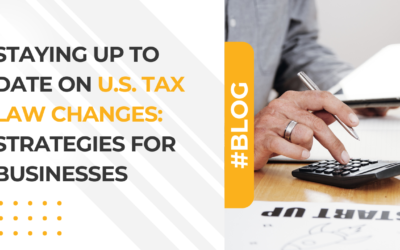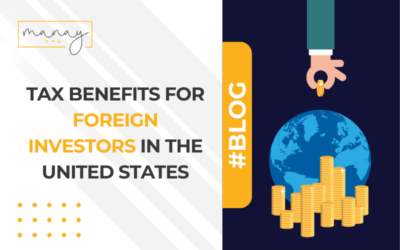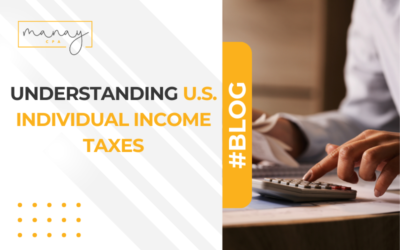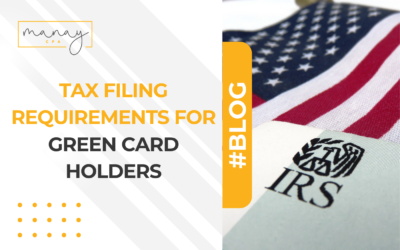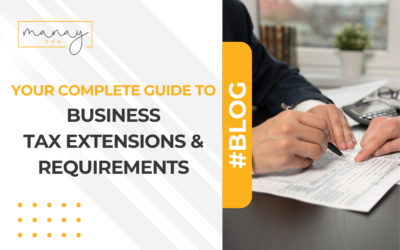Dark Side of C Corporation

The idea of operating a business as a C Corporation has become more attractive with the reduction of the corporate tax rate, but it’s not without drawbacks.
The Tax Cuts and Jobs Act (TCJA) of 2017 created and reduced the corporate federal income tax rate to 21%. This makes the idea of forming and running a business as a C corporation seems appealing than a “pass-through” business or an S corporation..
Also, when you start doing tax planning for your small business, the 21% corporate rate seems to be more attractive than the 37% maximum federal income tax rate for individual taxpayers, right?
But then, there are several matters to consider before deciding to form a C Corporation. For instance, there are tax planning issues that make it more complicated than it may first appear.
Unlike other types of business structures, corporations are subject to double taxes.
Anyone who wants to start a business needs information about tax regulations and new business formation. While a C Corp is appealing, you also need to look at the dark side of this possible opportunity.
This article will cover the potential tax implications of running your business as a C corporation.
Table of Contents
ToggleUnderstanding C Corporation
C Corporation, also known as “C Corp,” is a legal entity that allows the shareholders or owners of a business to be treated as separate entities. It protects the owners’ personal assets from creditors.
This type of structure can have an unlimited number of owners and multiple classes of stock. Some advantages of a C Corp are its continuity of existence and protection of shareholders’ assets.
This business entity is also more attractive to investors and other types of equity financing than an S corp or an LLC.
Aside from the complexity of operating a C corporation, one major disadvantage is in the form of double taxation.
The profits that the C corp earns are taxed at the entity level. It’s taxed again when income is distributed to shareholders as dividends.
C Corp vs. S Corp and Other Business Structures
Other business entity types don’t have to deal with the double taxation dilemma, unlike what C Corporations are dealing with.
Owners of “pass-through entities” (LLC, partnership, and sole proprietorship) are taxed directly. Income is passed down to their owners and is taxed on their individual income tax returns.
S corporations are also taxed similar to a partnership, where profits are passed through to their owners who pay taxes on their individual income tax returns.
The Double Taxation Dilemma
Double taxation is the term that refers to how corporate earnings and dividends are taxed by the U.S. government.
Since a C corporation pays taxes on a corporate level, it is subject to double taxation – which is its most frequently cited drawback.
How does double taxation work?
As of the 2020 tax year, C corp are taxed at a corporate rate of 21 percent (down from 35 percent in 2017).
Dividends are then taxed at the individual owner’s tax rate, which can be as much as 37% (depending on the tax bracket).
When a corporation pays out dividends to shareholders, the dividend also has tax liabilities. Shareholders who receive any dividend must pay taxes on them. Hence, double taxation.
Company CEOs also face this dilemma when deciding whether to reinvest the company’s earnings internally.
Double taxation does not affect S corporations, LLCs, or partnerships. They can “pass-through” earnings directly to shareholders without paying dividends. Small companies get to avoid double taxation as earnings are distributed to their employees and shareholders as wages.
No wonder double taxation has prompted significant debate and has always been the subject of criticism of most accountants, lawyers, and economists. Some contend that double taxation is fair enough, while others argue that it is unfair because the dividends were already taxed at the corporate level.
Double Taxation of Corporate Dividends
A financially healthy business means having strong earnings and profits. But this also leads to tax concerns.
When the company pays out dividends to its shareholders, those dividends have tax liabilities.
In other business structures, dividend distribution depends on the owners.
However, in a C Corp, profits in the form of dividends are strictly distributed based on the percentage of each shareholder’s stock ownership.
This income is subject to the second layer of taxation at the individual shareholder level, whether on dividends or capital gains from the sale of shares.
Double taxation occurs when a C corporation pays the corporate tax rate on earnings or profits. When the same income is distributed to shareholders as a dividend, it is again taxed at their rates as a dividend tax.

Double Taxation of Dividends Explained
If a corporation has a few shareholders, double taxation can be burdensome, but if a company has thousands of shareholders, double taxation doesn’t look unfair.
It is also common not only in the United States but in several countries around the world.
As explained by Tax Foundation,
“When the corporation distributes dividends, those are taxed as high as 37 percent (under the federal individual income tax rate) or as high as a percent for qualified dividends.”
When the C corporation has current, retained, or accumulated earnings and profits (E&P), non-liquidating corporate distributions to shareholders are considered as taxable dividends.
Currently, shareholders pay individual-level federal income taxes on dividends at a rate not exceeding 23.8 percent, including the 3.8 percent net investment income tax (NIIT). Considering that this current rate remains in force, dividends will be taxed lightly.
In this favorable tax environment, shareholders of profitable C corporations can consider arranging to pay corporate dividends to themselves.
Accumulated Earnings Tax Explained
Accumulated Earnings Tax is a corporate-level tax assessed by the IRS.
Its purpose is to prevent the accumulation of earnings if the reason for such is for shareholders to avoid paying taxes by not paying dividends.
If a C corporation retains earnings above a certain amount, the corporation may be assessed a tax penalty called the accumulated earnings tax (IRC section 531) equal to 20 percent of accumulated taxable income.
If the accumulated earnings are considered by the IRS to be the reasonable needs of the business, then the accumulated earnings tax won’t be imposed.
For example, IRS can consider reasonable business such as:
- Investment of new and productive equipment
- Business expansion or construction of a new facility
Accumulated Earnings Tax Can Be Assessed If Dividends Are Not Paid Out
With this, you’re probably asking, “Is it possible to avoid double-taxation for my C corp by not paying dividends?”
The answer is: it may not work.
The C corporation may face greater risk if it retains a substantial amount of earnings and profits (E&P) instead of paying them out as double-taxed dividends.
There’s a likelihood that the Internal Revenue Service (IRS) will hit the company with the dreaded Accumulated Earnings Tax (AET).
The IRS assesses corporate-level tax in these instances:
- The corporation’s accumulated earnings exceed $250,000, or $150,000 for a personal service corporation, and
- The corporation cannot demonstrate an economic need for the “excess” accumulated earnings.
As such, when the AET is assessed, based on IRC Sections 531-537, the tax rate remains the same as the maximum federal rate on dividends received by individuals – which is currently at 20 percent.
Zeroing Out Corporate Taxable Income with Compensation Paid to Shareholder-Employees Is Not Foolproof
You may also have thought of using the “Zero Out” Technique as a way to eliminate and avoid double taxation.
It’s like paying out all the remaining undistributed profits to yourself and shareholders. This way, the tax-deductible compensation will zero out in your corporation’s taxable income.
But then, even if it sounds like a great idea, the IRS will only allow this if the compensation to the shareholders is “reasonable.”
What IRS means as “reasonable” remains to be vague and has been the subject of contention between the IRS and the taxpayers.
Thus, if during the audit the IRS finds out that the purported compensation is not deemed reasonable or exceeds what’s deemed reasonable, it will be reclassified as disguised dividends – which is also subject to double taxation.
As such, the zero-out strategy works if the purported compensation paid to the shareholder-employee(s) is “reasonable.” But most of the time, this strategy is not foolproof.
What Does the Future Hold?
Forming a C corporation is an attractive tax planning strategy in these circumstances:
- If the current 21 percent corporate tax rate stays in place
- When your business needs to retain most or all its profits to finance growth
- If the corporate rate remains low while individual income tax rates increase
These aspects are vital because while taxes are at or near historically low rates, that doesn’t mean they will always stay that way.
You can take note that the corporate tax rate can be increased as easily as it can be lowered.
Is C Corp Right for Your Business?
As you can see, creating a C corp has both benefits and drawbacks.
Every business is unique. The decision of which business type to use is one you should discuss with an attorney and an accountant.
Considering the limitations of pass-through entities and in the right circumstances, forming your business as a C corporation can both be an attractive opportunity and a smart tax strategy.
You need to consider all the possible future changes to the federal income tax regime and tax cautions surrounding the C corp entity.
If you are unaware and unprepared for those potential tax caveats, you may end up increasing your tax burden.
Putting it All Together
In most cases, the decision as to the type of entity you will form best depends on taxes and taxable income.
This is one reason why, with any business and corporate-related decision, seeking assistance from a trusted CPA can make a huge difference.
Manay CPA Accounting and Tax Services can help you whether a C Corp is a good fit for your business and your growth plans. And should you decide to form your business as a C corporation, understand that there’s a way on how you can mitigate this double-taxation scenario.
If that doesn’t sound like something you want to decide or work on your own, you can contact us today.

Published on: 17 August 2021
Last updated on: 11 September 2023
Manay CPA is a reputable, full-service CPA firm based in Atlanta, Georgia. Founded in 2001, we provide comprehensive accounting and tax solutions to individuals and businesses across all 50 states.
